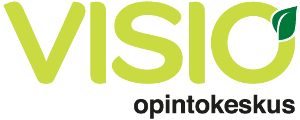What could the world be like in 2050?
It’s easy to build up dystopies. It’s more difficult to build up positive, hopeful future images.
That’s why it’s good to pause for reflection of a hopeful future. What types of alternative futures could exist? What kind of actions do these futures require? What should remain the same and what should change? On a practical level – what needs to change? What does the vision require from the structures, such as legislation? What type of changes should occur in people’s attitudes and values?
It’s difficult to build up positive futures. That’s why it’s good to pause for reflection of a hopeful future.
We paused in front of these questions on Sat 24th of April 2021 when there were a Futures Frequency – workshop for the participants of Feminist Climate Ambassadors online training. Training is organized by Educational Centre Visio and Green European Foundation.
The Futures Frequency method is developed by Finnish organization called Sitra. The method is developed for building alternative futures. The core of future thinking is the idea that there are many possible futures which depend on actions. During a session called What if anything could be possible? participants were encouraged to create their own what if questions. And questions were raised: what if everyone were equal? What if people would love themselves so would not need to consume so much for what other’s think about them? What if we could redistribute the world wealth in a way to erase social inequalities? What if we had the opportunity to change the productive system? What would the world look like without capitalism? What if we didn’t have to exploit animals but rather lived in harmony with nature?

During the workshop, the existing expectations and assumptions about the future were questioned and visions of the year 2050 were created. And what visions were they! Visions of equal representation of genders in politics (all over Europe, and beyond). Visions of minority groups being represented in decision making. Visions of environment, sustainability and parity being mandatory contents of education all over Europe.
Beside creating these visions, also means, actions towards them were contemplated. Actions were shared in three categories: firstly actions that influence people’s behaviour or practices, secondly actions that influence structures (legislation, taxation etc.) and thirdly (but not least!) actions that influence people’s thinking.
In a nutshell: Challenge the existing assumptions about the future. Imagine alternative hopeful futures, create visions. Ideate actions towards the vision. Action!
Keep on visioning!
Maia Fandi
ps. All the workshop materials are available on Sitra’s website: www.sitra.fi/en/projects/futures-frequency/#futures-frequency
pps. If you need a facilitator for your workshop, you can contact: maia.fandi@opintokeskusvisio.fi
